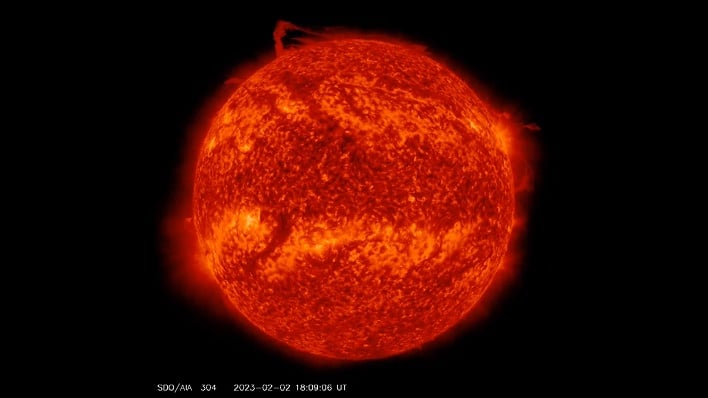Why A Massive Polar Vortex Spotted Around The Sun's North Pole Has Scientists Stumped

It is not unusual for scientists to spot filaments breaking away from the sun's surface. However, the one detected on January 2, 2023, by SDO has scientists and physicists befuddled. Space weather forecaster Tamitha Skov posted on Twitter, "Talk about Polar Vortex!" She added, "Implications for understanding the Sun's atmospheric dynamics above 55 degrees here cannot be overstated."
In an interview with Space.com, physicist and Deputy Director at the National Center for Atmospheric Research in Boulder, Colorado, Scott McIntosh said he has never seen a vortex of this nature, but pointed to the fact that something is happening at the sun's 55-degree latitudes like clockwork once each 11-year solar cycle.
McIntosh remarked, "Once every solar cycle, it forms at the 55-degree latitude and it starts to march up to the solar poles. It is very curious There is a big 'why' question around it." He continued, "Why does it only move toward the pole one time and then disappears and then comes back, magically, three or four years later in exactly the same region."
While Skov described it as a "Polar Vortex," McIntosh calls it a "hedgerow in the solar plasma." Scientists believe the peculiar circumstance has something to do with the reversal of the sun's magnetic field which occurs once every solar cycle, but have no idea what is causing it, according to Space.com.
McIntosh explained, "We can only observe the sun from the ecliptic plane (the plane in which planets orbit)." This means that researchers cannot view the sun's polar region directly, making it more difficult to solve the mystery. McIntosh is hopeful, however, that the European Space Agency's Solar Orbiter can provide data that could help explain what is going on.
Solar Orbiter is said to be the most complex scientific laboratory ever sent to the Sun. It will take images of the Sun from distances closer than any spacecraft before it, and for the first time view the uncharted polar regions. With one of its main objectives being to find an answer as to what drives the Sun's 11-year cycle of rising and subsiding magnetic activity, it could very well provide the answers others like Skov and McIntosh are looking for.


